
Publisher:
Bonnie King
CONTACT:
Newsroom@Salem-news.com
Advertising:
Adsales@Salem-news.com

~Truth~
~Justice~
~Peace~
TJP
May-22-2009 21:52

 TweetFollow @OregonNews
TweetFollow @OregonNews
Oregon Officials Remind Residents and Visitors to Leave Young Wildlife in the Wild
Salem-News.com OUTDOORSRemoving wildlife reduces their chances at long-term survival and is against the law.
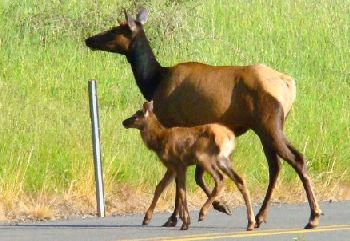 Photos courtesy: Oregon Department of Fish & Wildlife unless otherwise noted in caption. |
(SALEM, Ore.) - This is the time of year when Oregon’s wildlife are giving birth and raising their young, teaching them what to eat, where to take shelter, and how to survive in the wild. During this time, parents will temporarily and naturally leave their young to feed elsewhere.
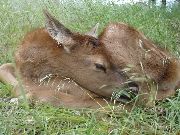 Does will leave fawns alone for |
Unfortunately, well-intentioned people sometimes mistake young animals temporarily left by their parents as orphans and remove them from the wild.
Doing so reduces the animal’s chances at long-term survival in its natural habitat. Last year, of 628 “orphaned” animals admitted to licensed wildlife rehabilitators, 150 died, 16 were euthanized and 16 may never be released back to the wild.
Never assume an animal is orphaned and remove it from the wild without further consultation. Only if you are certain an animal is orphaned because you saw the parent die should you interfere.
If you see a truly orphaned animal or one that clearly is in distress, is being disturbed by people or pets, is in a situation that endangers the animal (such as lying near or on a road) call your local ODFW office, OSP office, or a local wildlife rehabilitation center.
If you see a seal pup, young sea lion, or other marine mammal in distress or stranded, contact OSP’s hotline at 1-800-452-7888.
Removing or “capturing” wildlife from the wild and keeping them in captivity without a permit are considered Class A misdemeanors, punishable by up to one year in jail and a $6,250 fine. Last year, OSP cited one person for holding a black bear cub and warned another for holding a deer fawn. Holding marine mammals or migratory birds, or disturbing the nests, eggs, and young of migratory birds, are also violations of federal laws. Last year, an individual was cited for the unlawful take of a marine mammal (a harbor seal) and the case is pending.
Promptly return animals to nest say wildlife rehabilitators
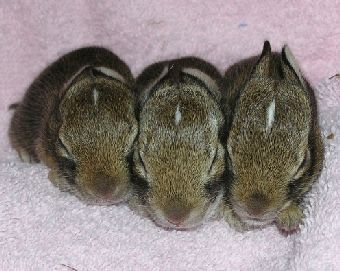 Young rabbits being cared for by Chintimini Wildlife Center |
This time of year, they are often presented with “orphaned” animals that may have done just fine if left in the wild.
Jeff Picton, with Chintimini Wildlife Center in Corvallis, is seeing many brush rabbits and eastern cottontails brought in by people who mowed their tall grass and uncovered nesting rabbits.
He offers advice on what to do when this happens: “Cover the baby rabbits by piling brush and grass over them so they are protected,” suggests Picton.
“Leave an opening for the parents to access them and recognize parents will only come in a few times a day to feed them, usually after dark.”
Promptly getting a young animal, particularly fledgling or nestling birds, back to its rightful place in the wild can make a huge difference.
One of Portland Audubon Society’s newest residents is Aristophanes, a raven that was purposely removed from the wild and raised as a pet for several weeks until it became destructive and was brought to the center.
“We tried to introduce it back to the wild; we had parent ravens very willing to take it,” explains Deb Sheaffer, staff veterinarian.
“But the raven was so imprinted on people that it would follow people around. It was not willing to go with ravens.”
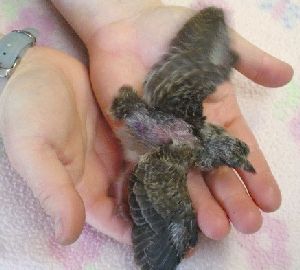 A fledgling mourning dove that was rehabilitated by |
If quickly returned to their nest, nestling birds (not fully feathered) will recover.
“The idea that adult parents won’t accept a baby bird that’s been touched by a person back into the nest is an old wives’ tale we fight all the time,” says Sharnelle Fee of Wildlife Center of the North Coast in Astoria.
Nestling birds that have fallen out of their nest can be put back while fledgling birds, out of the nest and on the ground because they are learning how to fly, should be left alone.
Another way to help wildlife is to realize that birds, raccoons, squirrels, skunks and many other animals are looking for nesting sites this time of year. Take steps to keep them from nesting where they shouldn’t. Seal your home properly by closing chimneys, attics and crawl spaces; repair holes or weak spots around your home where an animal could enter; or take other measures.
Another common problem that occurs when people take in wildlife is malnutrition. Portland Audubon Society recently admitted a weeks-old brush rabbit that had been fed cow’s milk. It only lived a few hours before it died. “The rabbit died of malnutrition,” explains Sheaffer. “It could not digest processed cow milk.”
Lynn Tompkins of Blue Mountain Wildlife in Pendleton will never be able release a short-eared owl into the wild because the person holding it fed it steak for several weeks and the owl suffered fractures “We can’t release it because it has so much damage to its skeleton due to its poor diet,” says Tompkins.
Before you put an animal at risk by removing it from the wild and holding it, call ODFW, OSP or a wildlife rehabilitator.
Tips on helping young wildlife
BIRDS
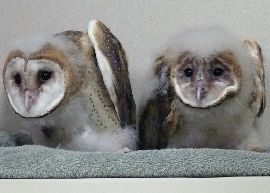 Many of these young barn owls being cared for by |
Return nestling birds to the nest. Nestlings (baby birds not fully feathered) found on the ground can be gently and quickly returned to the nest. If the nest is out of reach, place the bird on an elevated branch or fence, or in a sub-nest like a small box, up high out of the reach of children and pets. Leave the area so the parents can return.
Bring your pets indoors. Cats are a major cause of injury and death for all birds, especially young birds. Keep your pets away from fledgling birds learning to fly and other small animals. Indoor cats live longer and won’t impact birds and small mammals.
Be careful when pruning trees. There may be a bird nest in the branch. Leave off pruning branches until birds are out of the nest.
Beware of cavity nesters. Barn owls and other birds could be nesting in haystacks or logs. Farmers can put up nest boxes near their haystacks so young owls can continue to be raised by their parents.
What if a bird flies into a window and appears hurt?
Birds don’t recognize glass and are confused by reflective surfaces, causing then to occasionally fly into windows. If you find a bird that has been stunned as a result of hitting a window, put the bird in an uncovered box with a towel on the bottom. Keep it in a quiet place away from pets and check back in a couple of hours. If the bird has recovered, it will have flown off. If not, contact a local ODFW office or your local wildlife rehabilitator.
OTHER WILDLIFE
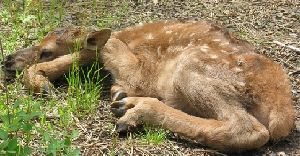 An elk calf on Glass Hill, Ladd Marsh Wildlife Area, |
Once all animals move out or are removed, avoid future problems with wildlife by tightly sealing all vents and openings and covering chimneys with a screen.
Call ODFW, a licensed wildlife rehabilitator or OSU Extension Service for advice. If you are certain that the animal does not have young, and you would like it removed, contact a licensed wildlife control operator.
Leave fawns, elk calves, and other young wildlife alone. By instinct, does leave fawns for extended periods to feed and so they don’t draw attention to their newborns.
Unless you witnessed the death of a parent, never assume a fawn or elk calf is orphaned, and leave young alone. Fawns and calves are very difficult to rehabilitate for release into the wild and their survival rate following release is usually low.
Marine Mammals like Harbor Seals and Sea Lions
 Seal pups, sea lions & other marine mammal on the |
Leave marine mammals on the beach. That is the only answer, and people who interfere with the natural process by touching a seal run the risk of causing it great inadvertent harm.
Young seals are often left on the beach while mothers feed in the ocean. Don’t touch, feed or try to move them.
Officials want anyone near one on the beach to stay back at least 100 yards and make sure dogs are leashed.
If you see a baby sea lion, seal pup, or other young marine mammal stranded or in distress, contact OSP’s special hotline for marine mammals at 1-800-452-7888.
Visit the Oregon Marine Mammal Stranding Network for more information.
Source: Oregon Department of Fish and Wildlife
Articles for May 21, 2009 | Articles for May 22, 2009 | Articles for May 23, 2009





Salem-News.com:
Terms of Service | Privacy Policy
All comments and messages are approved by people and self promotional links or unacceptable comments are denied.
[Return to Top]
©2025 Salem-News.com. All opinions expressed in this article are those of the author and do not necessarily reflect those of Salem-News.com.